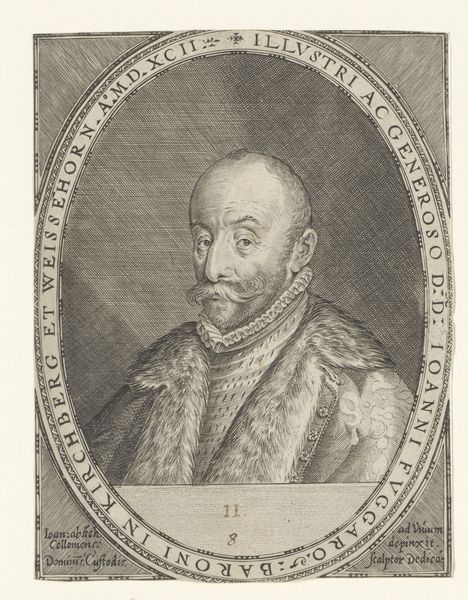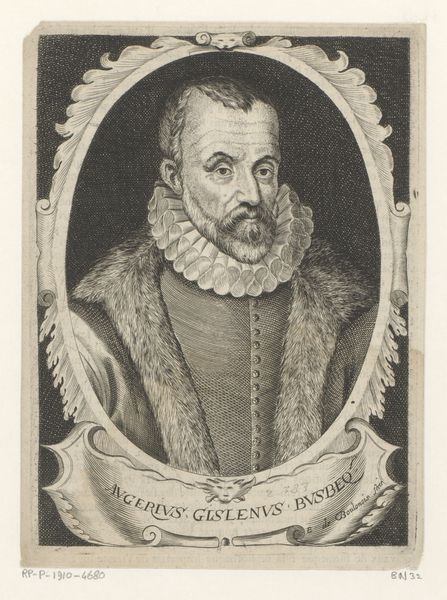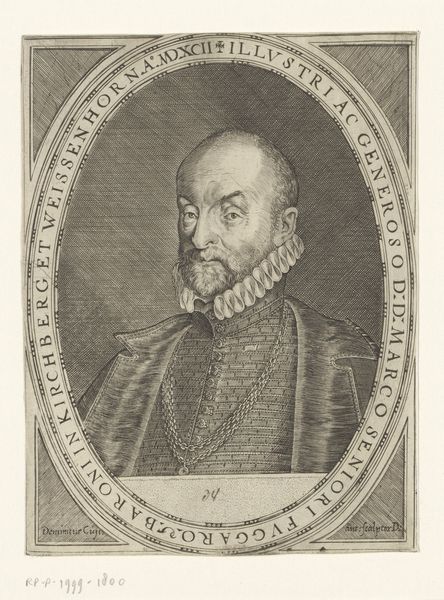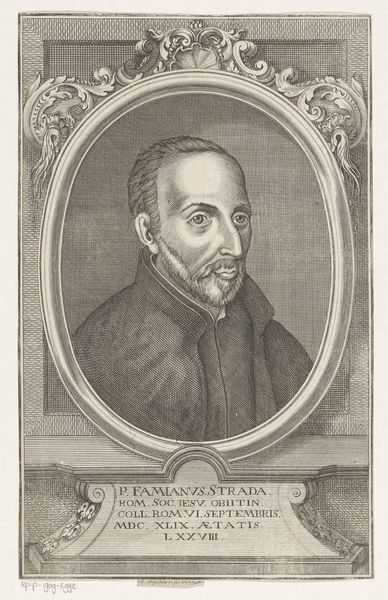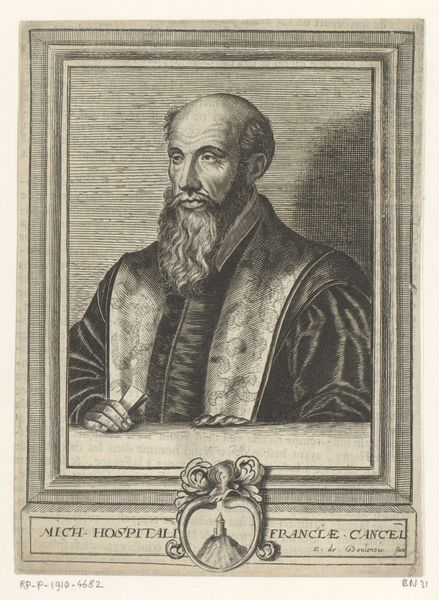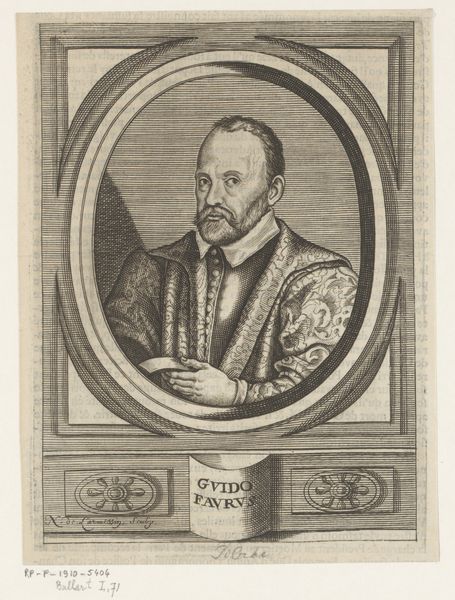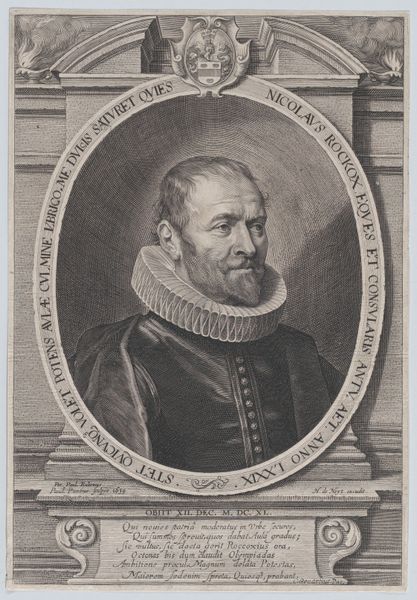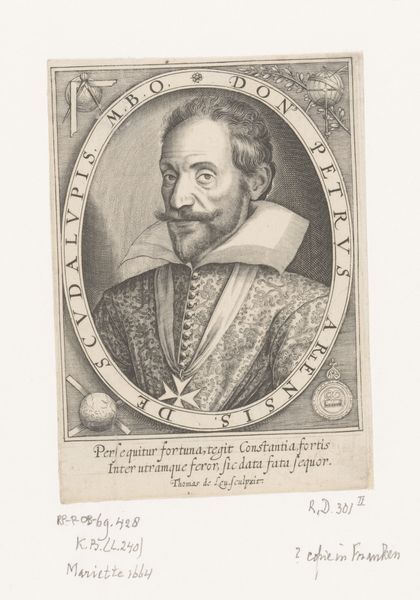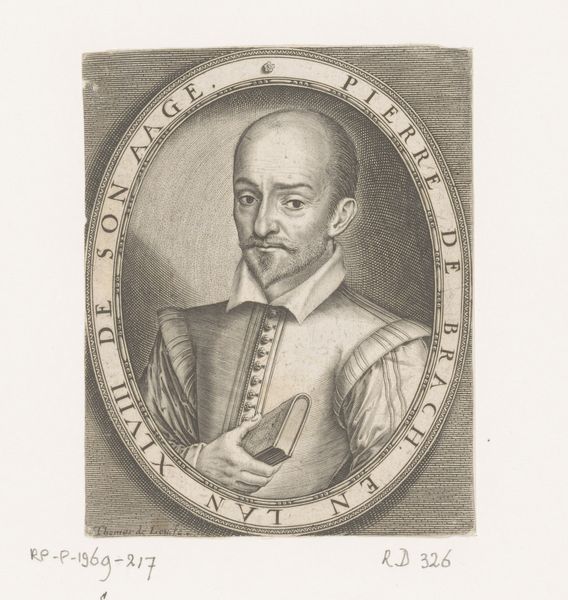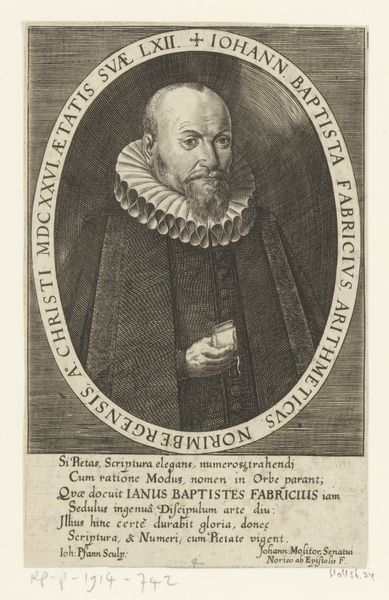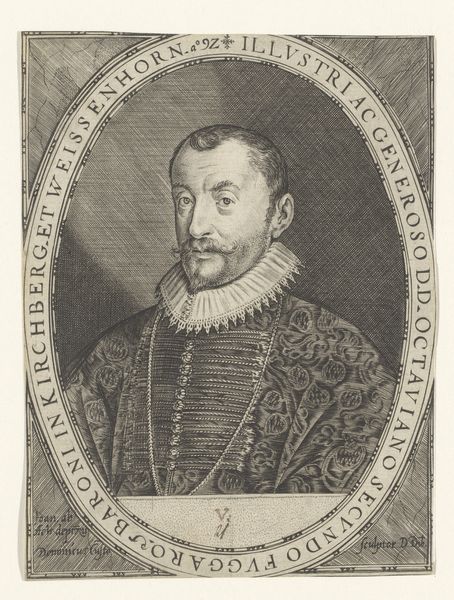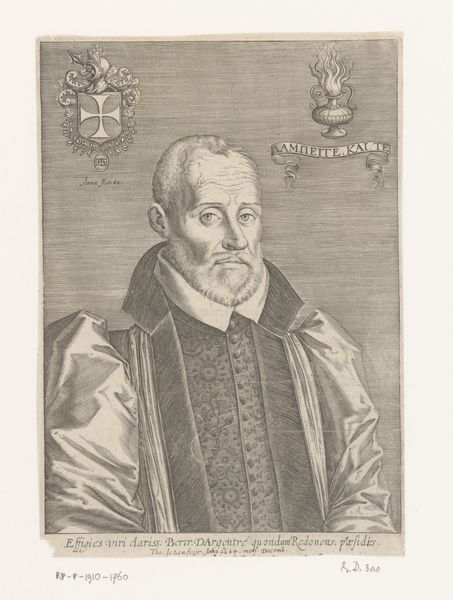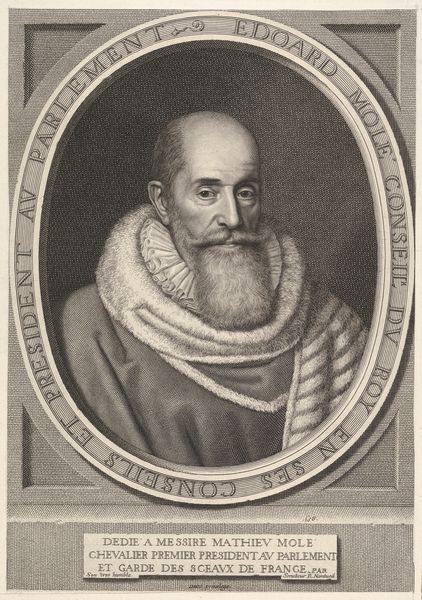
Dimensions: sheet: 25.8 × 19.4 cm (10 3/16 × 7 5/8 in.)
Copyright: National Gallery of Art: CC0 1.0
Agostino Carracci’s engraving presents Pietro Antonio Tolentino within an oval frame, set upon a pedestal adorned with grotesque masks. These masks, with their exaggerated features, pull us back to ancient Roman art, where they served as apotropaic devices, meant to ward off evil. Grotesques, derived from the Italian word 'grottesca' for 'grotto-like', were rediscovered during the Renaissance in the underground ruins of Roman structures. They became a popular motif, symbolizing the hidden, the irrational, and the monstrous aspects of the human psyche. The masks that adorn the pedestal evoke a sense of the primitive and the chaotic. Consider how similar motifs appear in varied forms across cultures, from the gargoyles of Gothic cathedrals to tribal masks used in ritualistic ceremonies. These images tap into a primal fear and fascination with the unknown, engaging us on a subconscious level. Like the recurring symbols in dreams, these grotesque faces resurface throughout history, evolving yet still retaining a link to their ancient, protective origins. The image becomes a cyclical journey through our collective unconscious, an enduring testament to the human psyche.
Comments
No comments
Be the first to comment and join the conversation on the ultimate creative platform.
